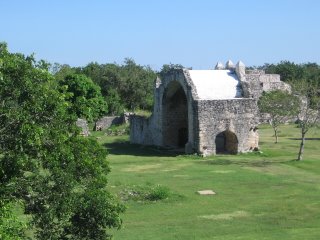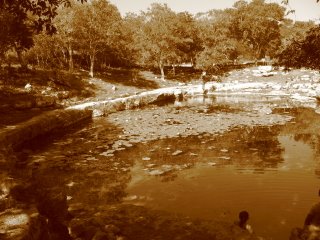
Dzibilchaltùn is a Maya ruin in the Mexican state of Yucatán, approximately 10 miles north of state capital Mérida.
The site has been continuously occupied for thousands of years, although it has expanded and contracted from mid sized city to small town more than once in its long history.
The most famous structure is the Temple Of The Seven Dolls, so named because of seven small effigies found at the site when the temple was discovered under the ruins of a later temple pyramid by archaeologists in the 1950s. On the Spring Equinox, the sun rises so that it shines directly through one window of the temple and out the other. The temple is connected to the rest of the site by a long sacbè.
The other major feature of Dzibilchaltùn is its cenote, which is used as a swimming hole by local residents year round. Dzibilchaltun also contains the ruin of a 16th century Spanish church built at the site after the conquest.
The archaeological site now contains a museum which houses some exquisite Maya artifacts from all over the region.

Cenote (pronounced in Spanish seh-no-teh and in English say-no-tay, plural: cenotes) is the name given in Central America and southern Mexico to a type of freshwater-filled limestone sinkhole. The name derives from a Mayan word, dz'onot.
(I took these photos on a recent trip)


1 comment:
Dzibilchatùn is wonderful! I love going there, the only thing is that the museum is not open on Monday so try to go when it's open. The cenote is cool in the summer and feels warm in the winter.
regards,
Theresa
Post a Comment